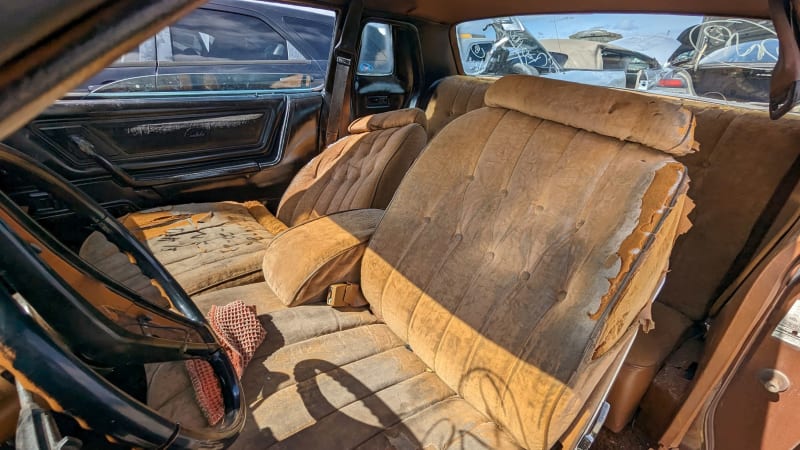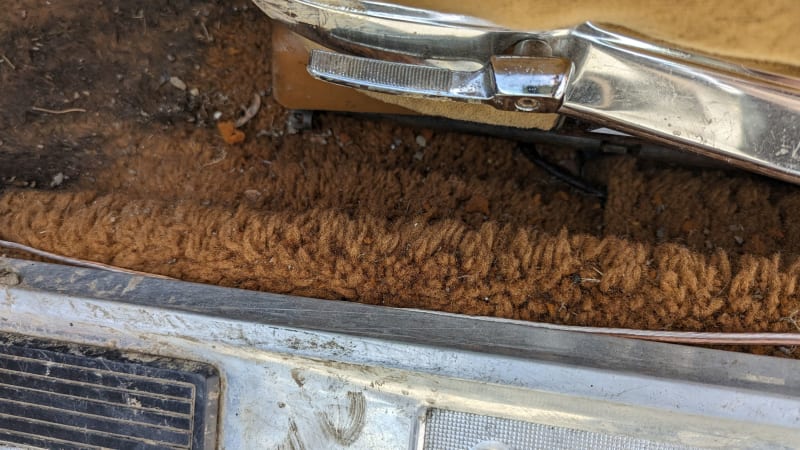Junkyard Gem: 1976 Chrysler Cordoba

With engine power way down and a sense of malaise settling over American roads, Detroit (and Kenosha) turned to opulent-looking personal luxury coupes on midsize platforms to lure car shoppers into showrooms. While John DeLorean’s Pontiac Grand Prix started it all more than a decade before, one of the best-known of all the rococo personal luxury coupes was the Chrysler Cordoba. Today’s Junkyard Gem is an early example of the Cordoba, found in a Northern California car graveyard last fall.
The first generation of the Cordoba (1975 through 1979 model years) was built on Chrysler’s B Platform, making it a sibling to quite a few of the most legendary Dodge and Plymouth muscle cars of the 1960s. This includes the Charger, Super Bee, Road Runner, Daytona and Superbird.
While French and Italian cities were very popular for use as American-market car names during the second half of the 20th century, Spain wasn’t completely ignored by Detroit. Ford offered the Granada, Cadillac had the Seville, and Chrysler decided to go with the ancient city of Córdoba as the namesake for its new personal luxury coupe. As native español mexicano speaker and longtime Chrysler pitchman Ricardo Montalban explains in the 1987 David Letterman interview above (skip ahead to 8:10), the correct Spanish pronunciation is really “CORE-doe-bah” with the emphasis on the first syllable, but Chrysler went with a spelling and pronunciation that was easier for English speakers to deal with.
We can’t talk about Ricardo Montalban and the Cordoba without watching at least one of the TV commercials that helped make the early Cordoba such a sales hit and put the term “Corinthian Leather” into everyday American discourse. Sometimes Ricardo described the leather as soft, while the terms rich and fine were applied on other occasions.

This car does not have Corinthian Leather, which cost an extra $187 in 1976 (about $1,020 in 2023 dollars). Instead, it has the “Calacia velour” cloth-&-vinyl seat upgrade, which cost just $17 ($93 after inflation). The base seats were done up in “cashmere-like” cloth-and-vinyl.

The base engine in the “49-state” 1976 Cordoba was a 400-cubic-inch (6.5-liter) big-block V8 engine rated at 175 horsepower and 300 pound-feet, but this is a California-market car and it got the 360-cubic-inch (5.8-liter) LA-series V8 engine (170 horsepower, 280 pound-feet) mandated for Cordobas sold in the Golden State that year. Some sources say that the 318 was the base ’78 Cordoba engine everywhere, but Chrysler’s own brochures say it was the 400 or the 360 and that’s what we’re going with here.

Here’s the emissions sticker that went on new cars sold in California in 1976. These standards for hydrocarbons, carbon monoxide and oxides of nitrogen are incredibly lenient compared to current federal standards, but having to pass any kind of smog check makes an old car worth less in California. The latest year for exemption from California emissions testing for gas-burners is 1975, so 1976 and newer classic cars aren’t considered as desirable.

That said, this car was in rough shape and didn’t stand much chance of being fixed up, regardless of model year.

The interior is musty and faded, but you can see how appropriate its interior would have been in Disco Era America.

Every Chrysler Cordoba ever built was born in Canada.

An automatic transmission, power steering and power brakes were standard equipment on the 1976 Cordoba, but air conditioning was an extra-cost option ($406, or about $2,215 now). The pinnacle of Cordoba sales was 1976, with 167,618 built.

The MSRP on this car was $5,375, which is about $29,327 in today’s dollars. That was close to the price tag of the similarly-equipped Pontiac Grand Prix and quite a bit more than the cost of a Mercury Montego MX Brougham coupe.

The Cordoba got an updated body for 1978, with stacked rectangular headlights and a more Monte Carlo-ish look. For the 1980 model year, the Cordoba moved to a smaller platform derived from the chassis used for the Dodge Aspen/Plymouth Volaré. At the same time, Chrysler’s Dodge Division began selling its own version of the Cordoba: the Mirada. By the 1980s, however, the Cordoba had faded from relevance. 1983 was its final year.
Yes, Ricardo Montalban mentioned the “rich crushed velour” upholstery (instead of a certain type of leather) now and then.
“An automobile has got to have some sense of dignity.”




